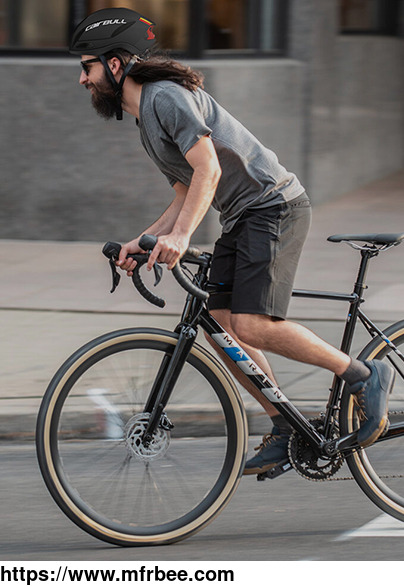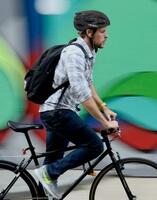CYCLOCROSS BIKE HELMETS
Quick Detail
- Minimum order:1
Specifications
Your cyclocross bike helmets from CAIRBULL
WHAT IS CYCLOCROSS?
Cycling has developed over the years from straightforward road racing to a variety of on- and off-road racing disciplines. Cyclocross racing, a combination on- and off-road race, is one of the
quickest and most physically taxing race kinds. Since cyclocross routes sometimes consist of short loops with a variety of terrain and hazards, racing cyclocross requires a unique kind of bike that
can handle speed on the road and traction and vibration off the road. A cyclocross race typically lasts between 30 and 60 minutes and involves riders navigating tarmac, dirt, steep slopes, run-ups,
grass, and other obstacles.
Although the cyclocross bike resembles a road bike in appearance, there are a number of significant distinctions that are appropriate for the style of bike and the terrain it will be used on. For
instance, the tires on cyclocross bikes are equally as knobby as those on mountain bikes, but they have a 700c tire size, which is significantly larger than that of mountain bikes and is comparable
to that of road bikes. As a result, there is less rolling resistance but more traction control in turns and on muddy terrain.
Another similarity is that cyclocross bikes have more compact frames than road bikes, which gives riders more control when riding off-road while maintaining an aerodynamic stance when driving. The
handlebars on the cyclocross bike are drooping like those on road bikes. In order to offer more stability through off-road parts, cyclocross bikes\' forks typically feature a broader sweep—or
steeper angle—than those of road bikes. A cyclocross bike has a different gear ratio than a road cycle. Although most cyclocross bikes attempt to strike a balance between the speed of road bikes
and the steeper climbs of easier gear mountain bikes, gear is more suited for mountain bike riding.
Obstacles in a cyclocross race may require a rider to get off of his bike. Then, if they are extremely adept, the riders must lift their motorcycles and jump over the barriers. The necessity to get
off and run often lends a special element to bike racing that is uncommon in other types of racing. Since most riders must run up steep slopes after going down them, cyclocross courses also contain
run-ups, hence the name. Depending on the track layout, cyclists may also spend a lot of time getting on and off their bikes.
The cyclocross racing format is quite similar to the criterium road race format in that the course is shorter and the riders must complete a set number of laps. For instance, a rider might complete
five laps plus a half-hour run. The race is short, intense, and fast thanks to this style, which makes bike handling a crucial component of the contest\'s success. Aerobic strength is essential to
an athlete\'s training program and race performance due to the rigors of the cyclocross race.
HOW OFTEN SHOULD I REPLACE MY BIKE HELMET?
Undoubtedly, one of the most crucial items to have when riding a bike is a helmet. It can save your life and shields the head in the event of falls or collisions. Whether you\'re just riding down
the street or long distance mountain biking, it makes sense to always use one. In fact, failure to abide by rules mandating minors to wear bike helmets may result in tickets and citations in
several jurisdictions.
The frequency of bike cyclocross helmet replacement depends on a number of variables. The bike helmet should typically be renewed once a year for children under the age of 18. The stability of the
helmet may deteriorate over time, and a child\'s head may expand, making the helmet an inadequate fit. A bike helmet should always be replaced right away for both adults and kids if you are engaged
in a crash that could harm the helmet\'s internal or external structure. In addition, any bike helmet that appears to be damaged needs to be changed out for a new one.
Some helmets come with replacement guides and replacement instructions. You might need to consider use vs. A company\'s recommendation to update adult helmets every two to three years. Calculating
how many hours you ride your bike each week is another method for determining when bike helmets need to be replaced. A lot of adult helmets have a 500-hour rating. You would require a new helmet in
around a year and a half if you continuously rode your bike for an hour each day.
Road bicycle helmets can deteriorate over time, particularly if they are not properly preserved. Keep the box when you purchase a boxed helmet. When you get home, use it to carefully store the bike
helmet out of the way where it won\'t be damaged by light, heat, or other objects. A helmet\'s lifespan can be increased through proper storage since, even if it is rated for a specific number of
years or hours, damage can still happen if it is handled carelessly. Before donning a helmet, always thoroughly inspect it for any cracks, breaks in the protective foam material, or other
noticeable flaws.





